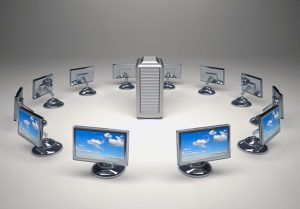
The world has seen the sudden adoption of remote work. Businesses have chosen VDI (Virtual Desktop Infrastructure) and EUC (End-user Computing) to enhance their security, function, and service to the public.
The performance of the business depends on the collection of data and information sharing. You get the advantage of working with flexible, reliable, and highly secure computer systems. This is how Virtual Desktop Infrastructure gains maximum profit for your business.
Just about ten years ago, implementing this tech was expensive, and many organizations couldn’t afford to incorporate this tech. However, the situation has developed a lot since then, and you can incorporate this virtual display infrastructure solution into your company without any issues.
The article will focus on VDI and EUC (End-user Computing) in the business world.
What is Virtual Display Infrastructure?
It is the virtualization implementation that hosts the end-user monitor connected to a server in a data center/cloud. It lets you access their virtual system image on the remote server from a different place.
The virtual desktop is similar to the physical computer, and it will have the hardware and software of the server used. You can access and use the (service provider) program from any IT medium. This tech is great for vertical markets like digital manufacturing and the media and entertainment sector.
What is EUC?
It is any aspect of data management that happens outside of a corporate production App. The computing is done outside and still being connected to the server makes the IT department uneasy. EUC is created when business users work with data and are connected to the company’s server. The new data management technologies make it easier for users to work with information.
What are the advantages/benefits of Virtual Desktop Infrastructure?
The flexible, intuitive, and secure solution benefits the present business. Below are the benefits of incorporating this Virtual Desktop Infrastructure into your company:
Improvement in productivity and agility
This solution lets you manage the systems much faster than standard imaging tech. This is necessary for increasing time-to-market. Virtualization enhances business continuity and recovery. Such as, if an entire website crashes, you can access the virtual desktop from a backup platform.
Minimum downtime
When a system fails to start, the user can immediately access the virtual desktop from any place via any connected device. This feature minimizes downtime incredibly.
Less Expense
Every employee’s PC image is saved and collected on remote servers, so you no longer need to invest huge amounts of money inexpensive devices. As your operating system (OS) and data are centralized, there will be a reduction in the tech support requirement. This will also reduce the maintenance cost.
Easy and flexible management
When you have the virtual desktop solution, deploying a new OS as Windows 10 happens in a smaller number of data centers/regions rather than occurring in all the offices. Because of this, the time and management concerns to deploying the incorporation and updates are minimized.
As the virtual desktop configuration and UI change just minutely, the end-users don’t have to learn anything new during the transition to VDI.
Improved security
When you centralize the user files, there is also a security benefit. The organization’s data is not at risk because of the negligence of any employee or theft of devices/gadgets. In fact, access to the information is secure and can’t be retrieved from a stolen system as data is stored in the cloud.
Businesses are now dependent on this technology solution, and it has helped every business function and grow without any hindrance. The future is bright for those who utilize this technology to the maximum.

